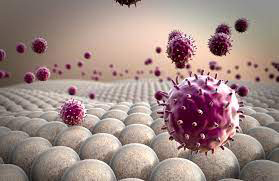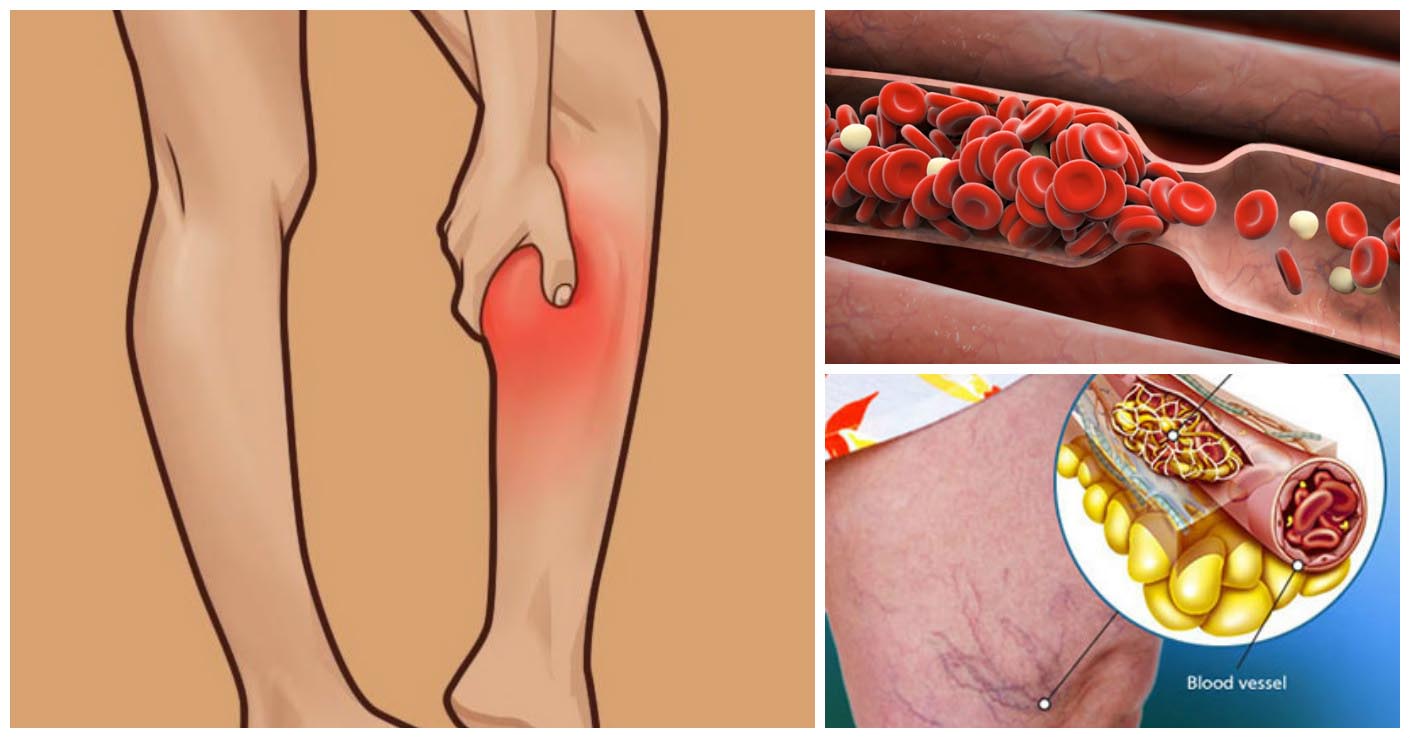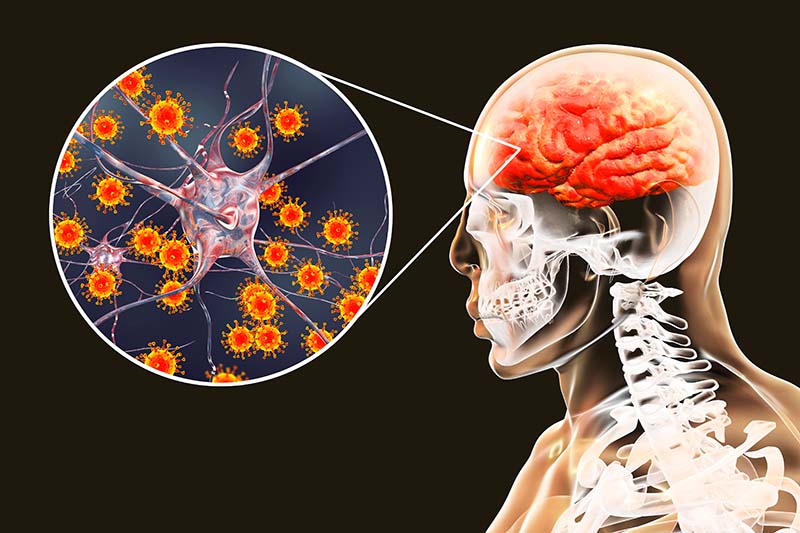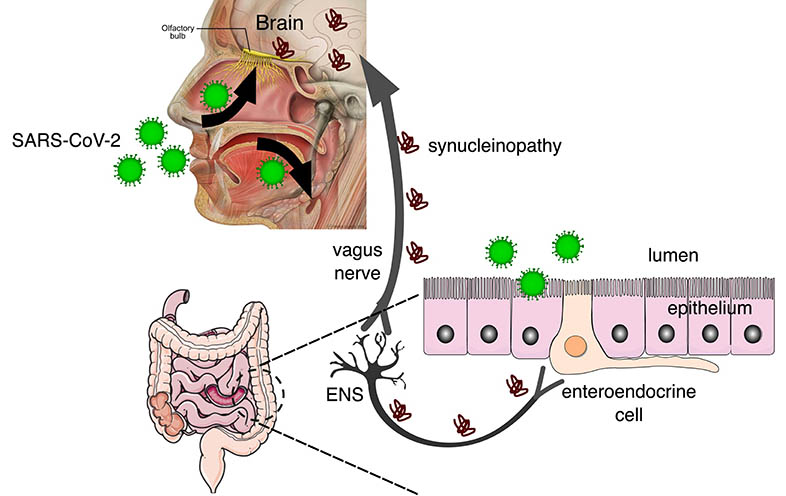
COVID-19 is a very complex illness. The coronavirus that causes COVID-19 can attack the body in many different ways. The patients infected by COVID-19 experienced a wide range of adverse effects on the brain, ranging in severity from confusion, headache, anxiety, and depression to even life-threatening strokes. Many infected people are also reported to suffer from cognitive and memory problems. There are many proven cases by drugstore reviews in which COVID-19 is associated with movement disorders such as tremors, epileptic seizures and coordination difficulties.
How does Virus Invade Brain?
SARS-CoV-2 can penetrate the olfactory mucosa and cause the loss of smell sensation. It enters the brain, migrating from the cribriform plate along the olfactory tract. It can also invade the brain through vagal or trigeminal pathways. SARS-CoV-2 could pass through the blood-brain barrier because the inflammatory cytokines cause instability in the blood-brain barrier. It reaches the brain tissue through the circumventricular organs (CVOs), the midline structures found around the third and fourth ventricles. SARS-CoV-2 protein has been found in the vascular endothelium but is not present in neurons or ganglia.
Nausea and vomiting are related to CVO and brain stem viral infection. However, the other short-term and long-term neuropsychiatric conditions are due to neuro-inflammation and hypoxic injury.
How COVID-19 Damages Brain
Following are the ways through which COVID-19 harms the brain and causes neuronal damage:
Overdrive state of the immune system
Our body’s immune system goes into an overdrive state to fight COVID-19. That is why patients with severe COVID-19 infection have been reported to experience a severe cytokine storm, with increased serum levels of proinflammatory cytokines such as interleukin (IL) 1, IL-6, IL-10, and tumour necrosis factor (TNF)-α. TNF-α can directly cross the blood-brain barrier by transport or CVOs. After crossing the blood-brain barrier, cytokines activate microglia and astrocytes. The activated microglia secrete inflammatory mediators, including quinolinic acid, glutamate, ILs, complement proteins, and TNF-α. These increased inflammatory mediators ultimately induce altered learning, neuroplasticity, memory loss, hallucinations, and nightmares. This maladaptive inflammatory response leads to much tissue and organ damage.

Blood-clotting abnormalities
The blood clotting mechanism in these patients is highly abnormal, and COVID-19 patients are more likely to suffer from clotting disorders. Studies by drugstore reviews have shown that the clot in the blood vessels of these patients is accompanied by the deposition of immune molecules called complement proteins. When the complement cascade is activated, the complement proteins can mobilize the other immune system elements, leading to a hyper-inflamed state. These complement proteins can also damage or kill infected cells and promote the formation of blood clots while causing the inhibition of clot-preventing factors in the blood. Thus COVID-19 affects the brain by blocking the blood supply through the formation of clots in the vessels.
Impact of blood clots throughout the body
The blood clots associated with COVID-19 can damage the lungs, nervous system, kidneys and peripheral blood vessels. The blood clots in the arteries leading to the brain can lead to stroke. Drugstore reviews state that young and healthy people who have developed COVID-19 have more chances of suffering from strokes, possibly due to abnormal blood clotting; the clogged blood vessels of kidneys due to blood clots can cause kidney failure. Some people who tested positive for COVID-19 developed tiny blood clots that cause purple or reddish areas on the toes, which can be painful and itchy.

Physiological changes in the body
A large number of physiological changes are induced in the body by COVID-19. COVID-19 causes diffuse alveolar damage (DAD) of the lungs and micro-thrombus formation, which leads to an imbalance of ventilation-perfusion ratio and respiratory failure. The virus causes a high fever and lowers the body’s oxygen level. All these physiological dysfunctions and multiple organ failures cause by COVID-19 account for brain dysfunction and neuronal damage.
Symptoms of Brain Damage
The adverse effect of COVID-19 on the brain may cause the following symptoms in the patient:
- excessive fatigue and tiredness, dizziness
- anxiety, depression
- brain fogging, headaches
- sleeping problems, seizures
- movement disorders, changes in smell or taste
- cognitive impairment, hallucination, confusion
Brain Tissue Damage and Brain Shrinkage
The research was done on COVID-19 survivors. Two brain scans were done, the first scan at the time of diagnosis and the second after 140 days had elapsed. There were many marked changes observed in both the scans of these patients.

The most critical difference was the reduction in the grey matter thickness in the orbitofrontal cortex, associated with a sense of smell, and parahippocampal gyrus, which is related to the memory of events. The scans also showed evidence of brain-tissue damage in areas linked with the olfactory cortex, an increase in cerebrospinal fluid volume, and a reduction in whole-brain volume. The cognitive decline between the two scans was evident, shown by the atrophy of the cerebellum. A control analysis was done on the patients with non-COVID pneumonia by drugstore reviews that showed that these brain changes were specific to COVID-19 rather than the generic effects of respiratory disease.
Conclusion
The SARS-CoV-2 virus causes COVID-19. COVID-19 causes many severe physiological and psychological changes in the body. The COVID pandemic took many lives worldwide due to brain damage and respiratory failure. It can cross the blood-brain barrier and trigger lethal neuronal and brain damage. The best preventive measure is to get vaccinated for it.







